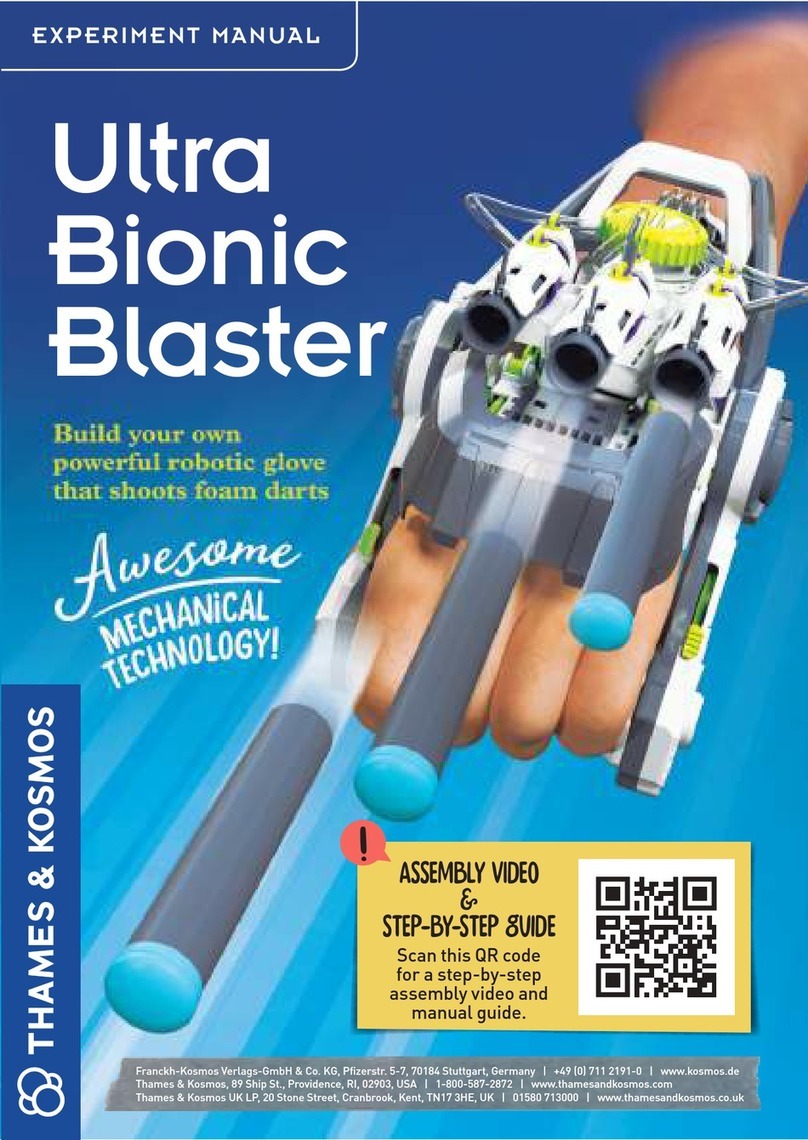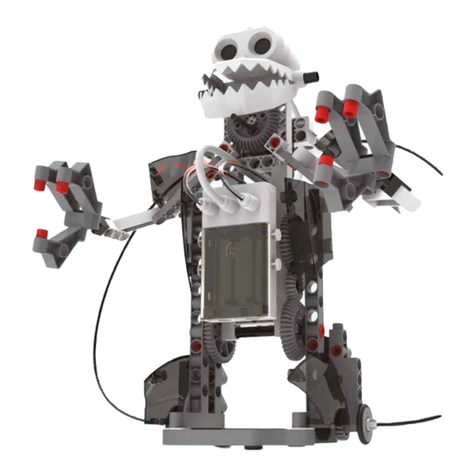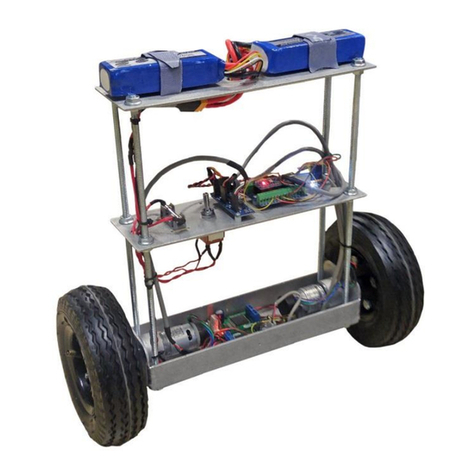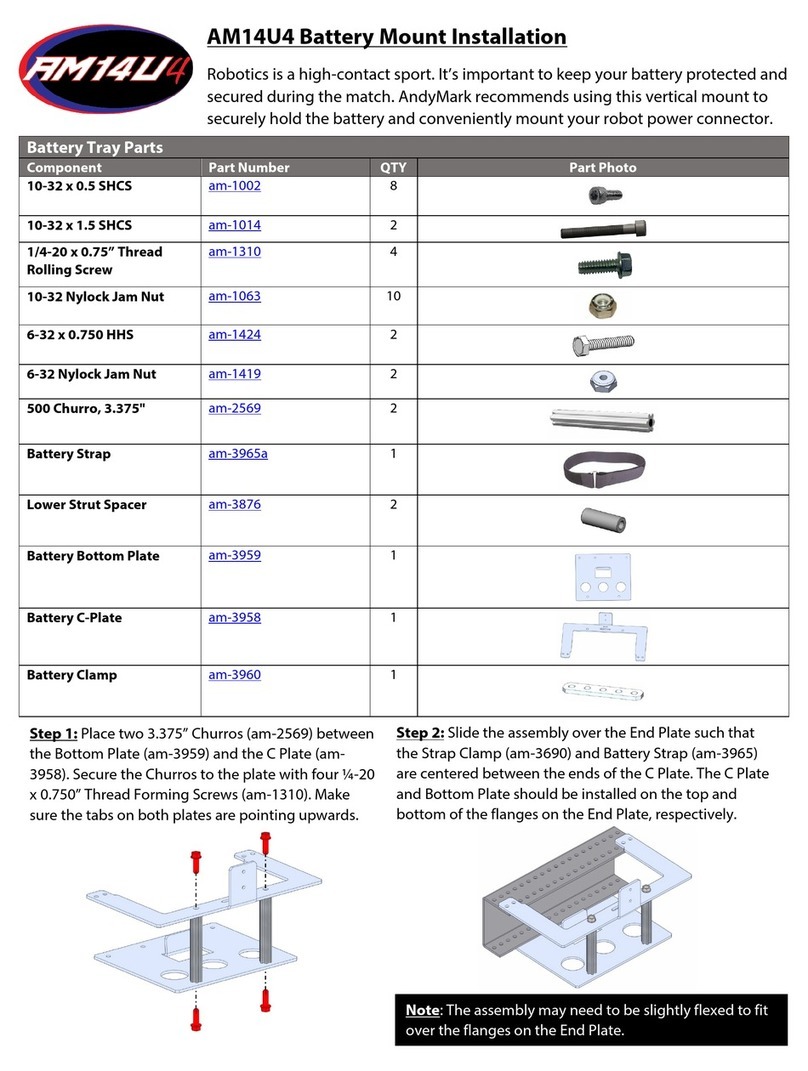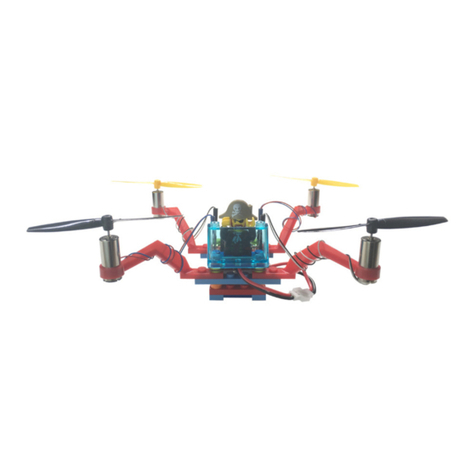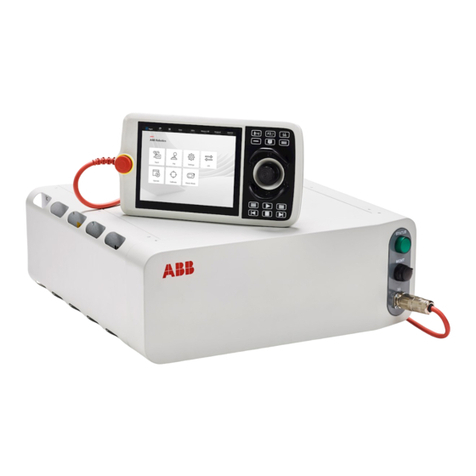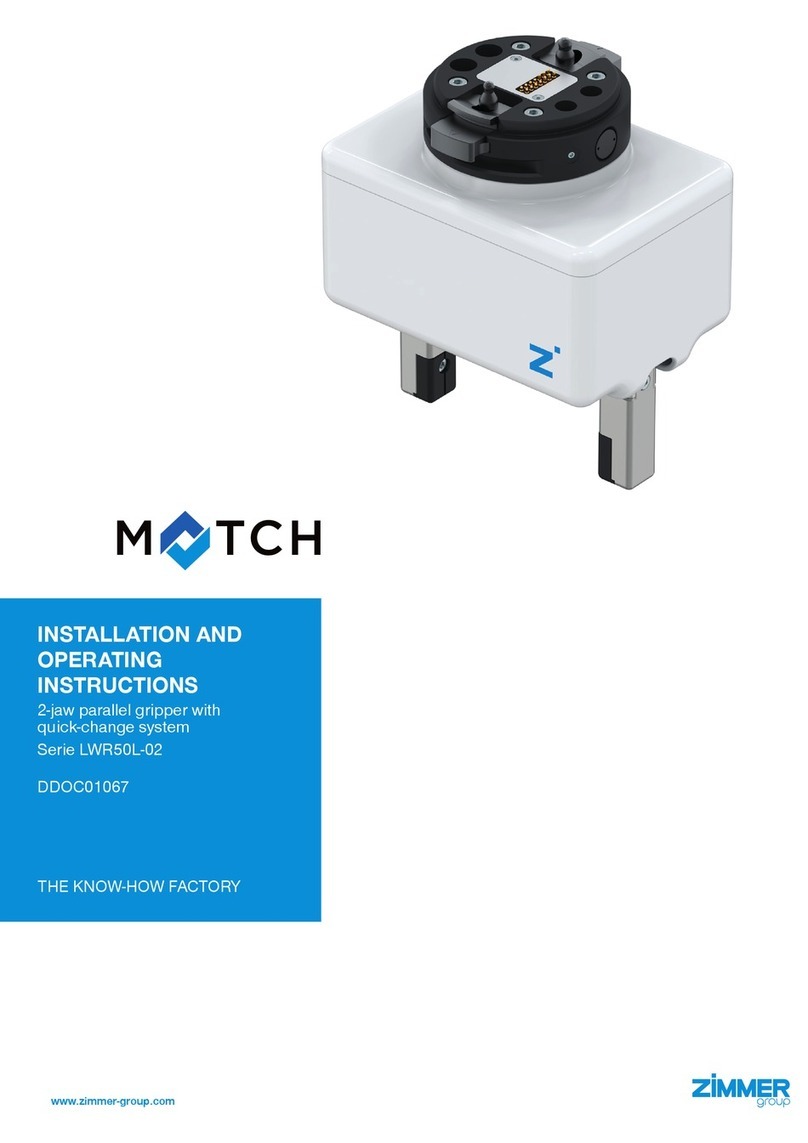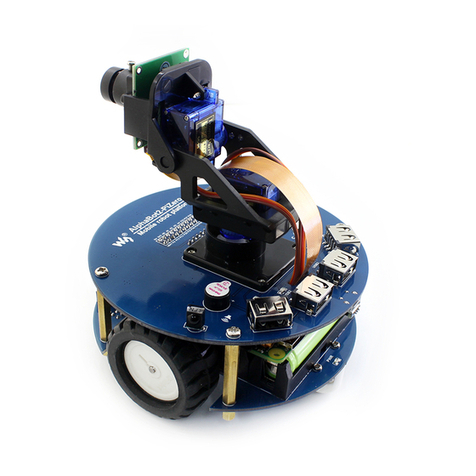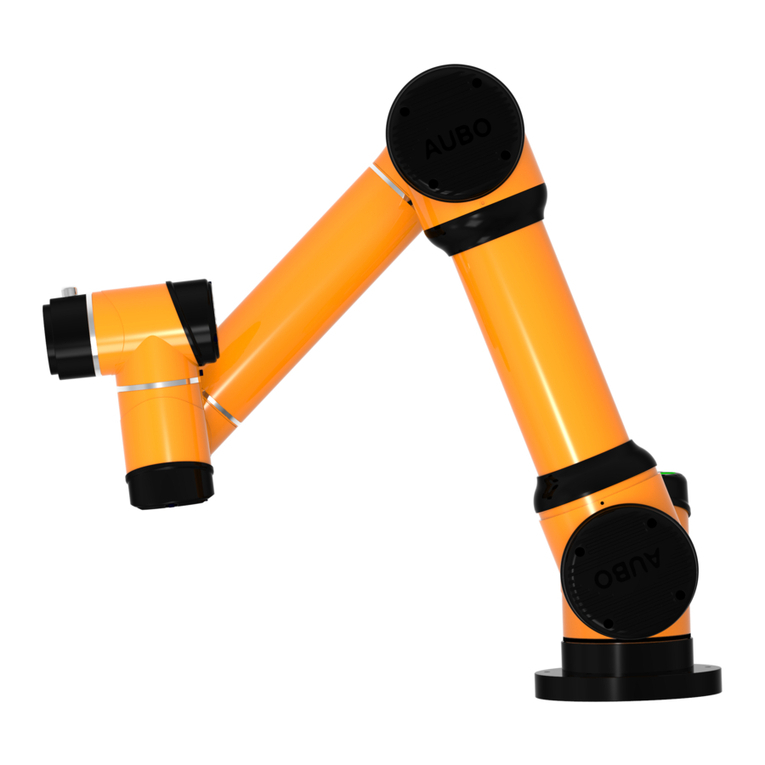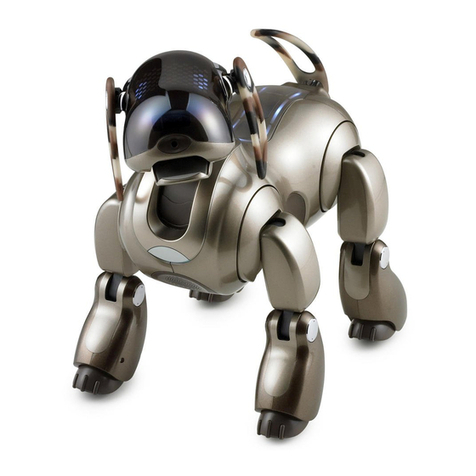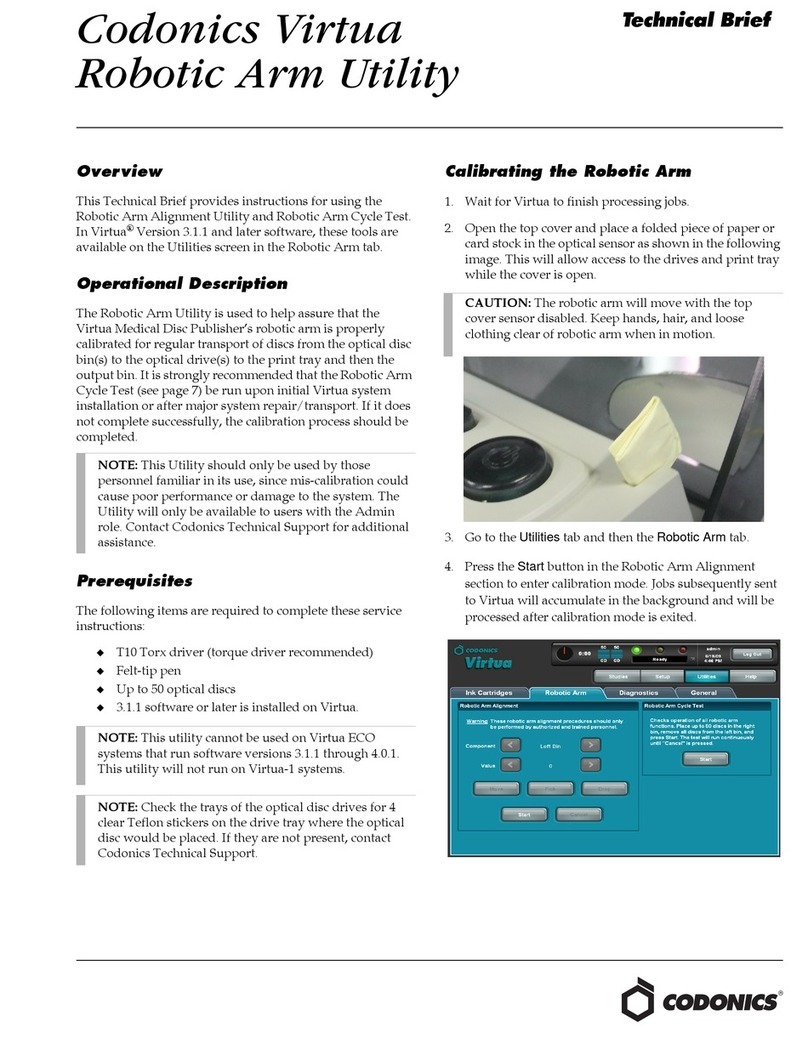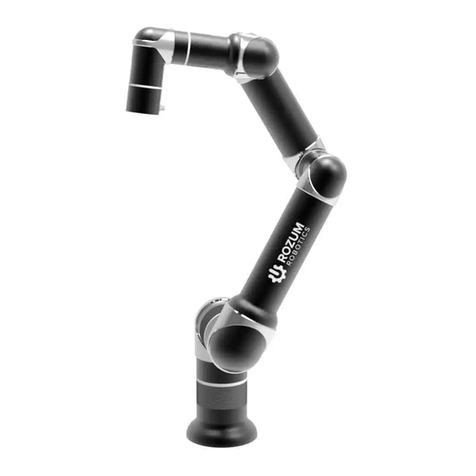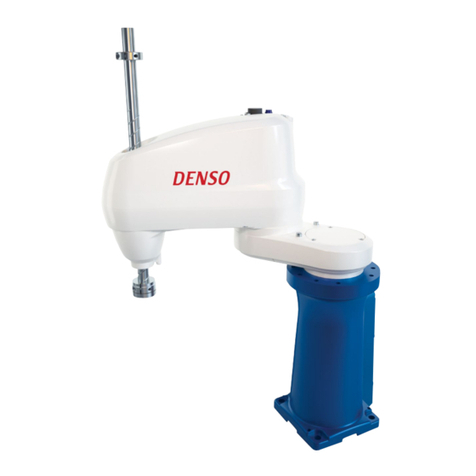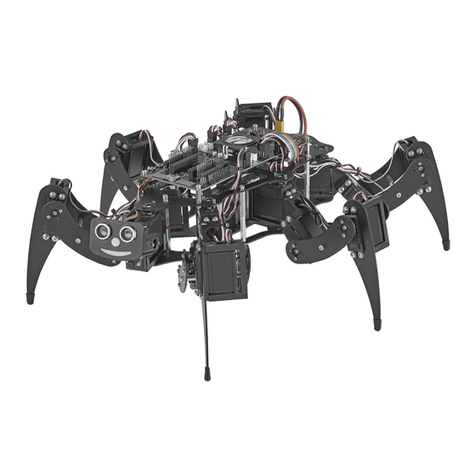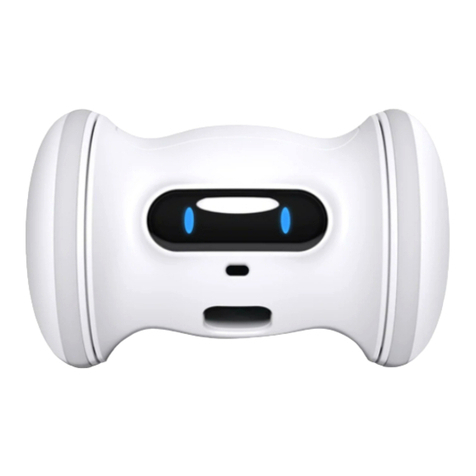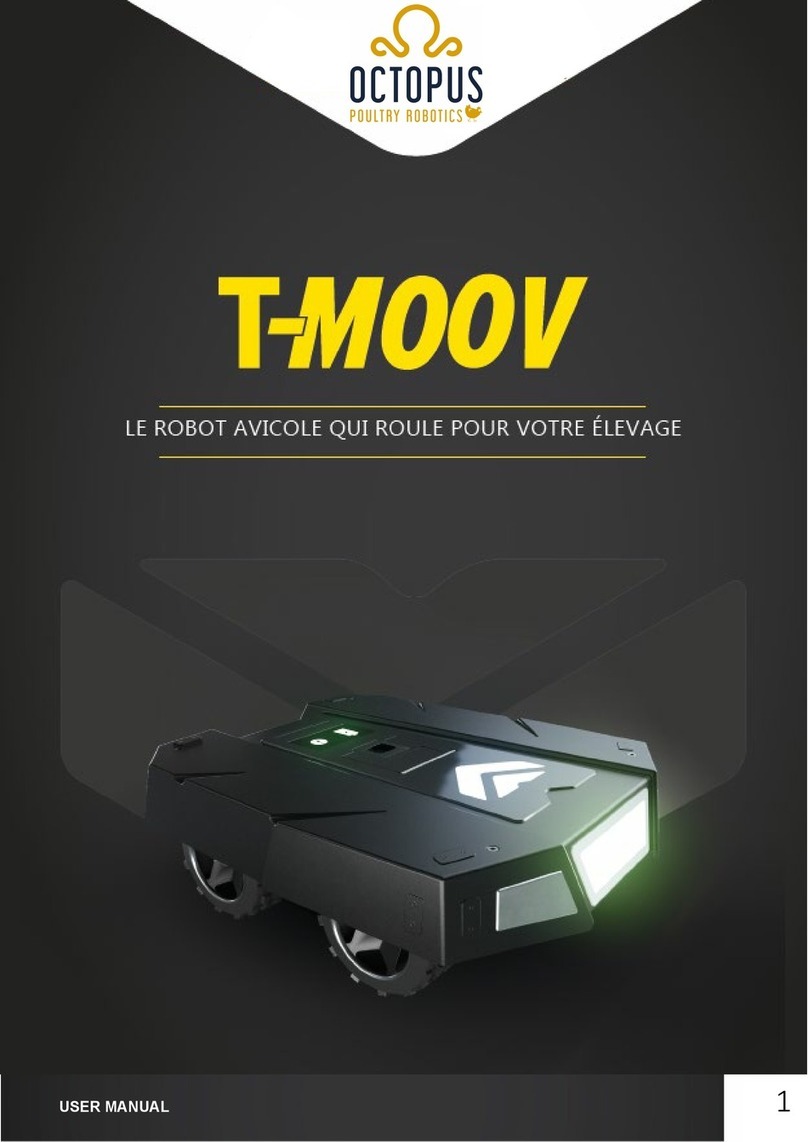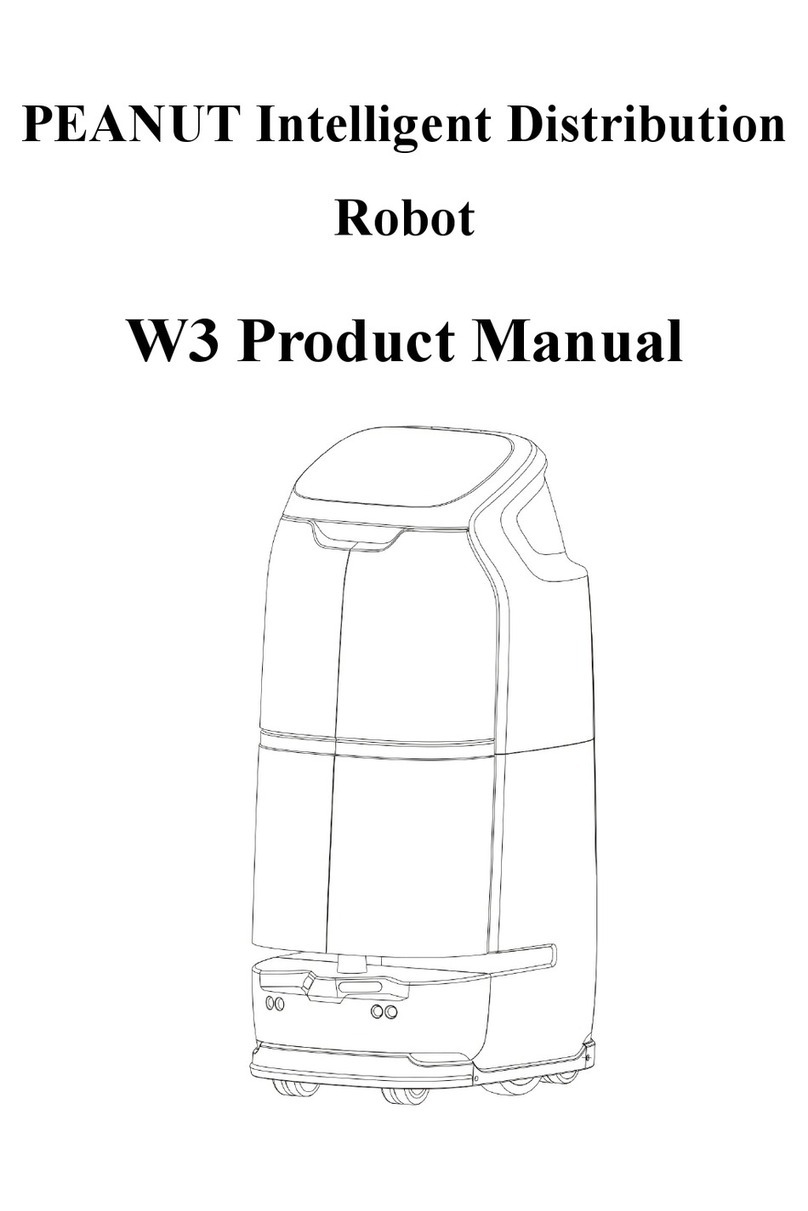.
Modern wind tur bines use generators to produce electricity.
The blades of the wind turbi ne are set in motion by the wind
and drive the generator. This pr inciple has been used in
windmi lls for centuries. T he only difference is that the
windmil ls do not drive elec tric generators, but rather
millstones, whic h tu rn grain into our. The basic mode of
operation was the same then as now: the blades ext ract part
of the energy contained i n the wi nd and convert it into
rotational energ y. In this way, wind energ y is converted to
do work that humans need.
Strandbeests
—
the real life role models of the windBots
Dutch artist Th eo Jansen is the inventor and
designer of the Strandbeests, which is Dutch fo r
beach animals . These are complex art ob jects that
can walk or craw l. Their movement makes the
Strandbees ts look almost like liv ing creatures.
They are usually dr iven by wind or compressed air.
Some of these beach ani mals are as big as a horse,
others are enorm ous and larger than a house!
Jansen has copied a lot fr om nature in the
development of the Str andbeests. He se es his art
objects as crea tures that die, evolve, and even
reproduce — for examp le, by having other people
replicate his cre ations or print out miniature
versions using a 3D pr inter.
The Strandbee sts have been around sinc e 1990,
and Jansen continue s to develop them. He has
divided the deve lopment into 12 period of evolutio n
— similar to dinosaur s.
When the wind is blow ing strongly, you can clearly feel that there is a
lot of energy in the wi nd. In a storm, you can barely keep both feet
on the ground! Th is immense power can be converted to power cars
and other vehicles. Wind t urbines can generate electricity, which in
turn can be use d to cha rge electric cars. Electr icity can also be used
to produce hydrogen, which can power fuel cell ca rs. These two
methods work very well to power cars i n cities, which can reduce
urban air pollut ion. Because these methods use the wind — ins tead
of fossil fuels — to generate energ y they are much more
climate-fr iendly.
Energy from
Wind Power
Learning From Nature
Humans aren’t the only ones who have bee n using the wind
for transport ation — plants and animals have used wi nd
power to get around for millions of yea rs.
Think of birds t hat can glide through the ai r for hour s on
end, barely apping the ir wings to stay in ight. They ’re not
the only ones! Some spiders enga ge in a process called ballooning, in
which they use the wi nd and earth’s electric elds to travel many mi les.
Plants and fun gi have also developed sophisticated ways to reproduce
and scatter their see ds with the wind. This pri nciple is called
ane moch ory, and t he seeds of the plants are called ying see ds or
winged seeds. Pa rticularly well known are t he seeds of the dandelion,
and the seeds of the maple tree. R arer, but quite impressive
are the yin g seeds of Alsomitra macrocar pa, a tropical
cucumber plant. Its see ds look like small gliders, with a
wingspan re aching up to 14 cm (5.5 inches). These mar vels
of nature have inspir ed aviation pioneers in their inventions
of airplanes and ot her ying machines for humans.




















